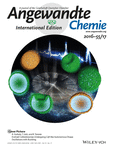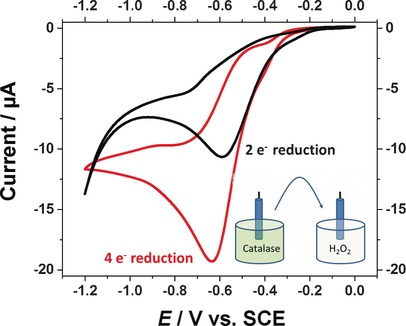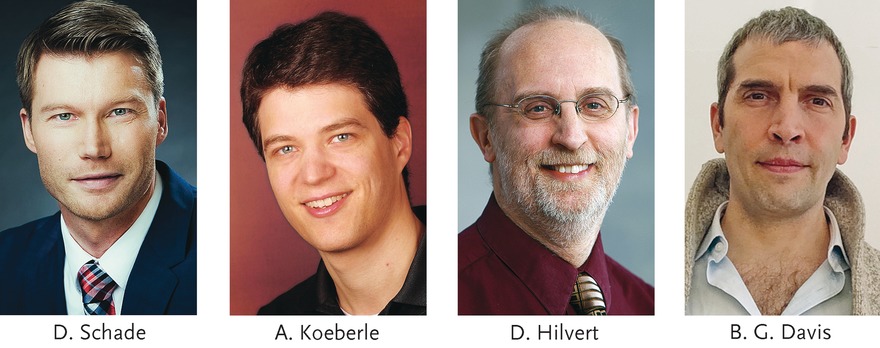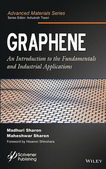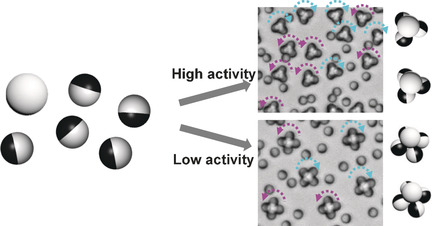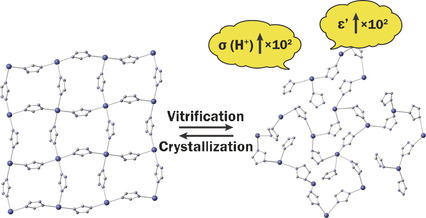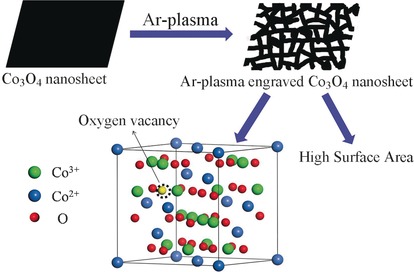Journal list menu
Export Citations
Download PDFs
Cover Pictures
Cover Picture: Evolved Colloidosomes Undergoing Cell-like Autonomous Shape Oscillations with Buckling (Angew. Chem. Int. Ed. 17/2016)
- Page: 5099
- First Published: 08 March 2016
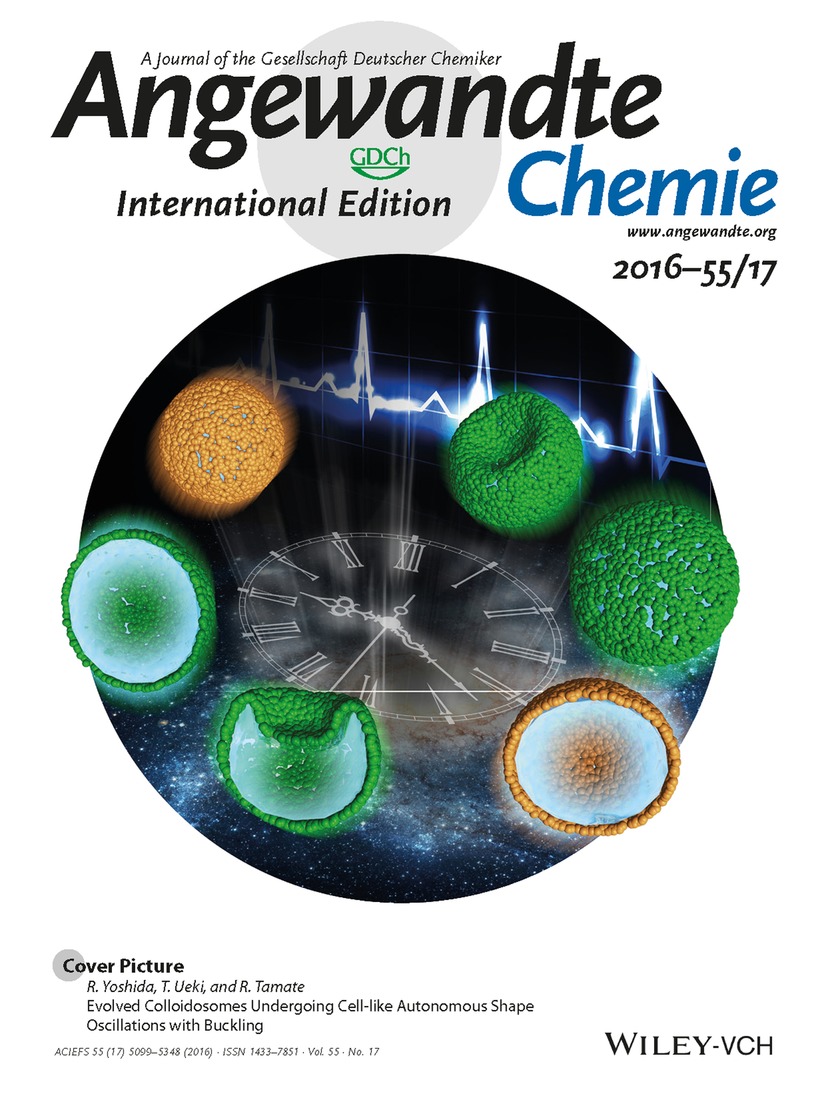
Complex oscillatory behaviors of living cells are demonstrated by R. Yoshida, T. Ueki, and R. Tamate in their Communication on page 5179 ff. by using a biomimetic colloidosome composed of self-oscillating microgels that exhibit autonomous shape oscillations with buckling deformations driven by an oscillatory chemical reaction. The resulting oscillatory waveform profile becomes markedly more complex than that of conventional self-oscillating materials.
Inside Cover: Electrocatalytic Hydrogen Production by a Nickel(II) Complex with a Phosphinopyridyl Ligand (Angew. Chem. Int. Ed. 17/2016)
- Page: 5100
- First Published: 23 March 2016
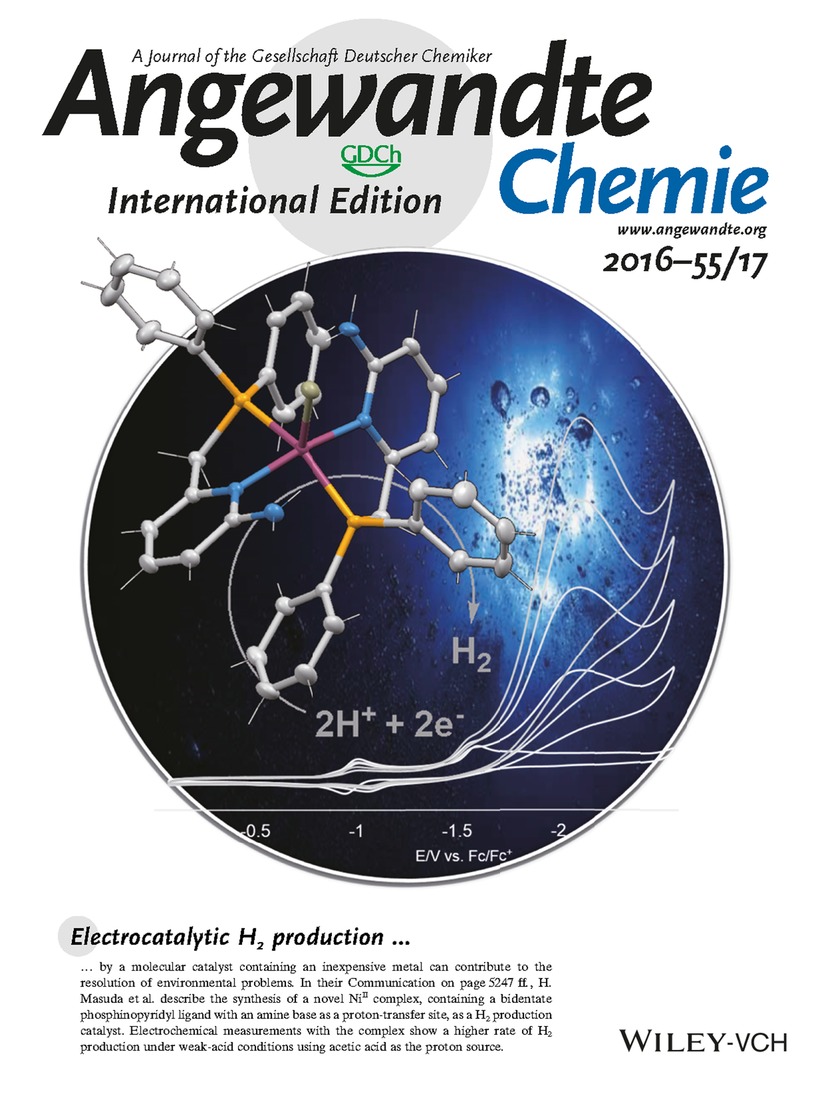
Electrocatalytic H2 production by a molecular catalyst containing an inexpensive metal can contribute to the resolution of environmental problems. In their Communication on page 5247 ff., H. Masuda et al. describe the synthesis of a novel NiII complex, containing a bidentate phosphinopyridyl ligand with an amine base as a proton-transfer site, as a H2 production catalyst. Electrochemical measurements with the complex show a higher rate of H2 production under weak-acid conditions using acetic acid as the proton source.
Inside Back Cover: Generation and Reaction of Carbamoyl Anions in Flow: Applications in the Three-Component Synthesis of Functionalized α-Ketoamides (Angew. Chem. Int. Ed. 17/2016)
- Page: 5347
- First Published: 30 March 2016
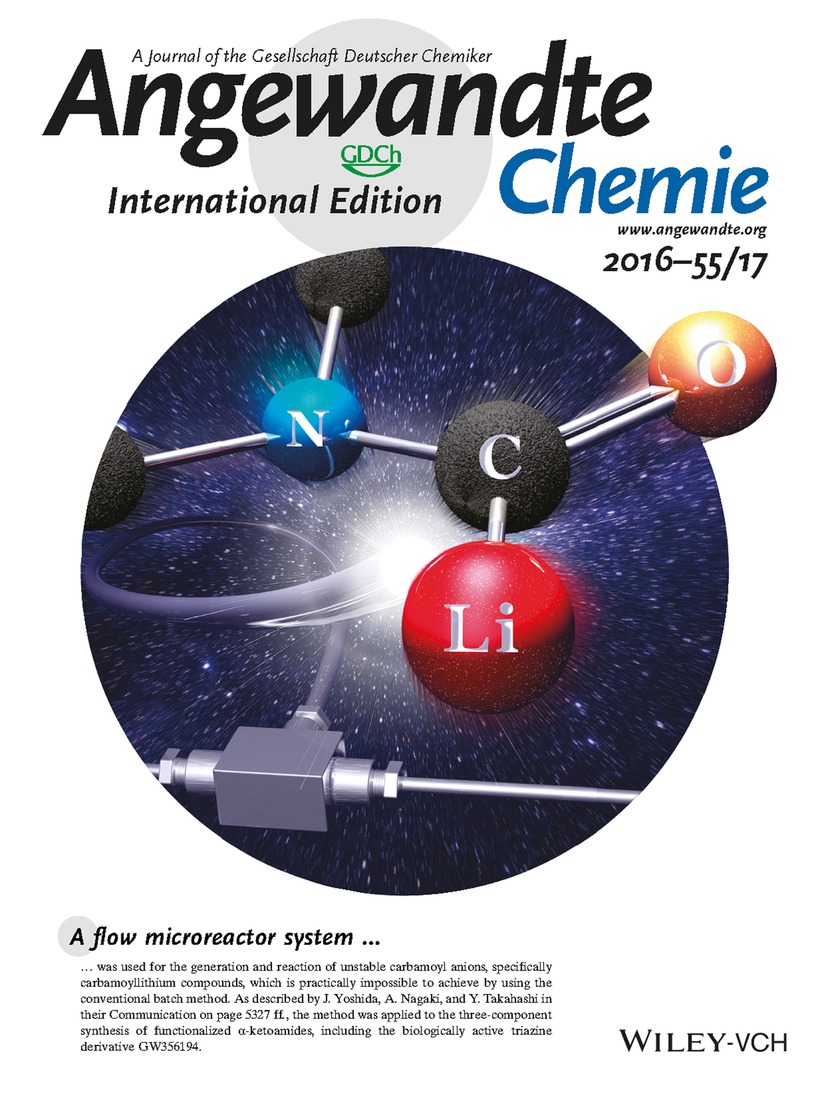
A flow microreactor system was used for the generation and reaction of unstable carbamoyl anions, specifically carbamoyllithium compounds, which is practically impossible to achieve by using the conventional batch method. As described by J. Yoshida, A. Nagaki, and Y. Takahashi in their Communication on page 5327 ff., the method was applied to the three-component synthesis of functionalized α-ketoamides, including the biologically active triazine derivative GW356194.
Back Cover: Molybdenum Speciation and its Impact on Catalytic Activity during Methane Dehydroaromatization in Zeolite ZSM-5 as Revealed by Operando X-Ray Methods (Angew. Chem. Int. Ed. 17/2016)
- Page: 5348
- First Published: 24 March 2016
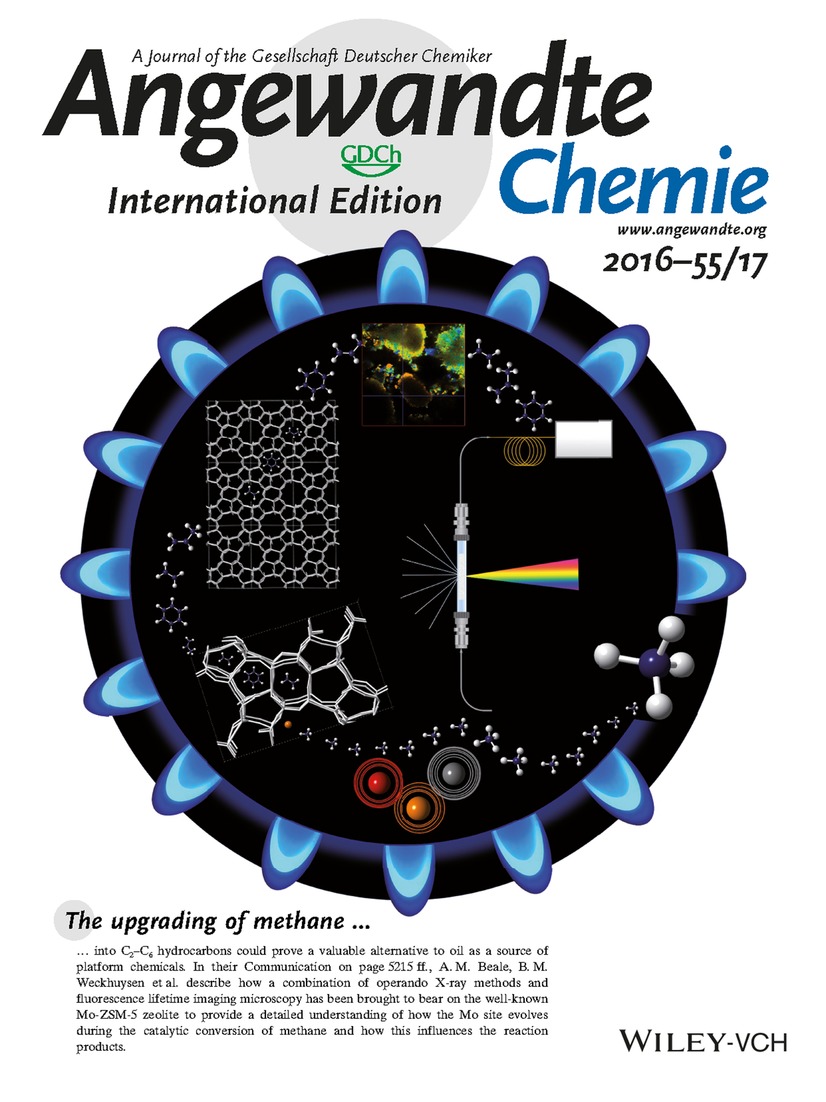
The upgrading of methane into C2–C6 hydrocarbons could prove a valuable alternative to oil as a source of platform chemicals. In their Communication on page 5215 ff., A. M. Beale, B. M. Weckhuysen et al. describe how a combination of operando X-ray methods and fluorescence lifetime imaging microscopy has been brought to bear on the well-known Mo-ZSM-5 zeolite to provide a detailed understanding of how the Mo site evolves during the catalytic conversion of methane and how this influences the reaction products.
Frontispiece
Frontispiece: Bandgap Engineering of Titanium–Oxo Clusters: Labile Surface Sites Used for Ligand Substitution and Metal Incorporation
- First Published: 13 April 2016
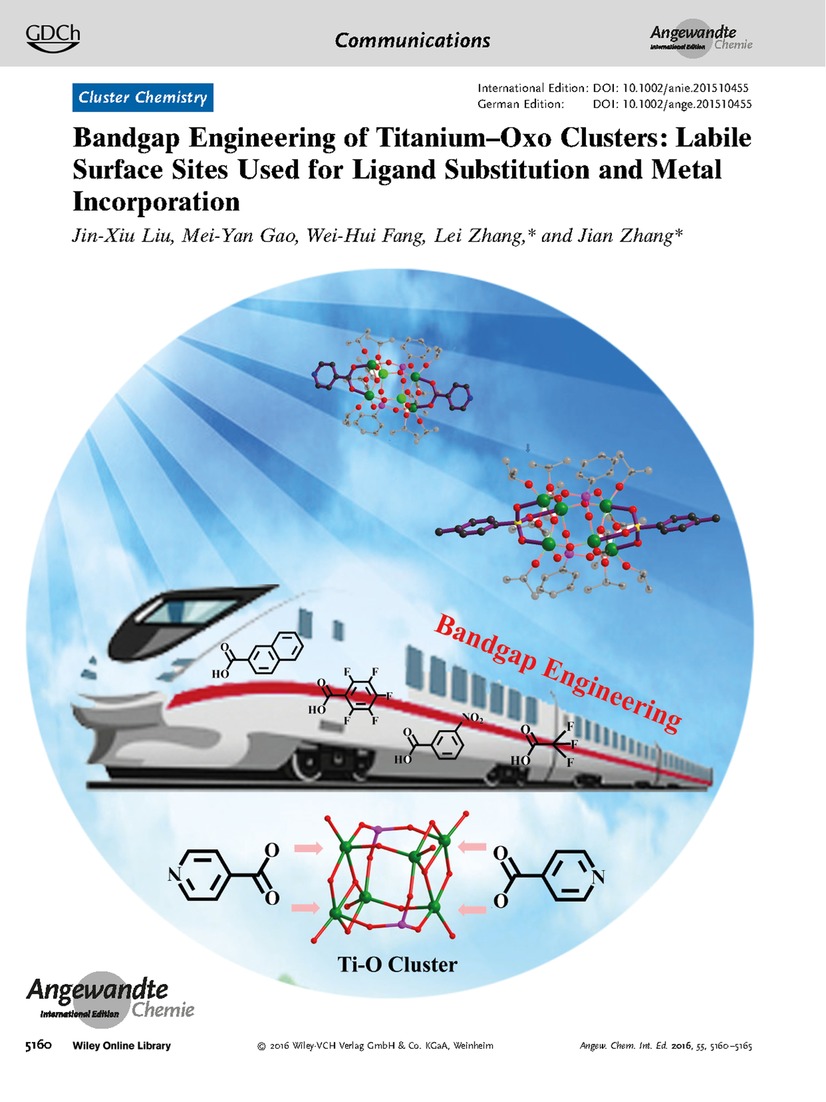
Cluster Chemistry In their Communication on page 5160 ff., L. Zhang, J. Zhang et al. show that the labile coordination sites of a {Ti6} cluster can be used to functionalize the surface of the {Ti6} cluster with organic species and transition-metal ions.
Graphical Abstract
Graphical Abstract: Angew. Chem. Int. Ed. 17/2016
- Pages: 5103-5114
- First Published: 13 April 2016
News
Spotlights on our sister journals: Angew. Chem. Int. Ed. 17/2016
- Pages: 5116-5119
- First Published: 13 April 2016
Author Profiles
News
Book Reviews
Graphene. An Introduction to the Fundamentals and Industrial Applications Edited by Madhuri Sharon and Maheshwar Sharon.
- Page: 5122
- First Published: 15 March 2016
Minireviews
Biomaterials
Peptide-Decorated Dendrimers and Their Bioapplications
- Pages: 5124-5134
- First Published: 16 March 2016
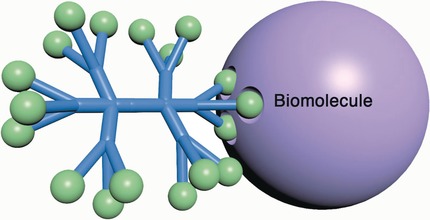
Decking out dendrimers: Peptide-decorated dendrimers (PDDs), a class of spherical polymers with peptides covalently attached to their surface, have found application in imaging and drug development. In addition to selected bioapplications, this Minireview also summarizes the development of PDD synthetic routes that employ diverse conjugation chemistry. Green ball=peptide; blue structure=dendrimer scaffold.
Reviews
CNT Segments
Design and Synthesis of Carbon Nanotube Segments
- Pages: 5136-5158
- First Published: 18 February 2016

The selective and predictable synthesis of structurally uniform carbon nanotubes (CNTs) represents a long-standing goal in both nanocarbon science and synthetic organic chemistry. This Review focuses on the studies toward controlled synthesis of CNTs with single chirality through the organic synthesis of CNT segments and the organic template-assisted growth of CNTs.
Communications
Cluster Chemistry
Bandgap Engineering of Titanium–Oxo Clusters: Labile Surface Sites Used for Ligand Substitution and Metal Incorporation
- Pages: 5160-5165
- First Published: 09 March 2016
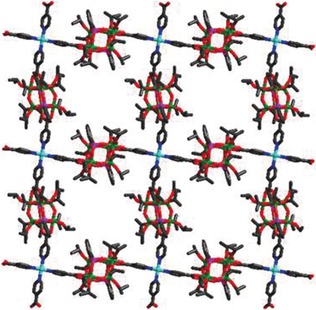
Organized titanium clusters: The labile coordination sites of a robust {Ti6} cluster have been used to functionalize the surface of the {Ti6} cluster with organic species and transition-metal ions (see picture). A bandgap engineering study indicates that both the electron-withdrawing effect of the organic ligands and the coordination environments of the incorporated metal ions tune the bandgap structures of the titanium–oxo clusters.
Colloidal Motor
Directed Self-Assembly Pathways of Active Colloidal Clusters
- Pages: 5166-5169
- First Published: 24 March 2016
Heterocycle Synthesis
Silver-Catalyzed 7-exo-dig Cyclization of Silylenolether-ynesulfonamides
- Pages: 5170-5174
- First Published: 22 March 2016

Dig this! Cyclization of silylenolether-ynesulfonamides proceeds at ambient temperature under mild reaction conditions under silver catalysis. Bridged compounds were obtained exclusively through 7-exo-dig reactions. The protocol is applicable to a wide range of substrates, thus leading to azabicyclic frameworks.
Photolesions
Characterization of the Intermediate in and Identification of the Repair Mechanism of (6-4) Photolesions by Photolyases
- Pages: 5175-5178
- First Published: 21 March 2016
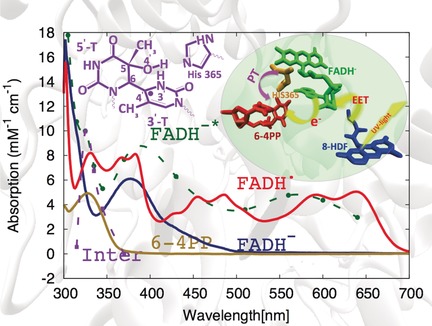
QM/MM simulations were conducted to assign a specific molecular structure to the intermediate formed in the electron-induced repair of (6-4) photolesions (purple) detected previously in ultrafast transient absorption spectroscopy. The repair mechanism involves proton transfer from the protonated His365 to the N3′ nitrogen of the lesion along an oxetane-like transition state.
Artificial Cells | Hot Paper
Evolved Colloidosomes Undergoing Cell-like Autonomous Shape Oscillations with Buckling
- Pages: 5179-5183
- First Published: 09 March 2016
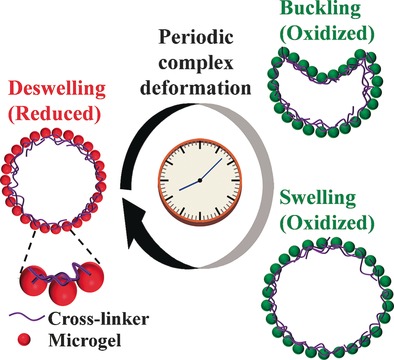
Buckle up! A cell-like colloidosome composed of self-oscillating microgels that exhibits drastic shape oscillations in addition to swelling/deswelling oscillations was fabricated. The resulting oscillatory profile waveform became markedly more complex than a conventional one. Multiple buckling points were observed for larger colloidosomes, analogous to cell behavior.
Multistability
Direct Observation of Ordered High-Spin–Low-Spin Intermediate States of an Iron(III) Three-Step Spin-Crossover Complex
- Pages: 5184-5189
- First Published: 17 March 2016
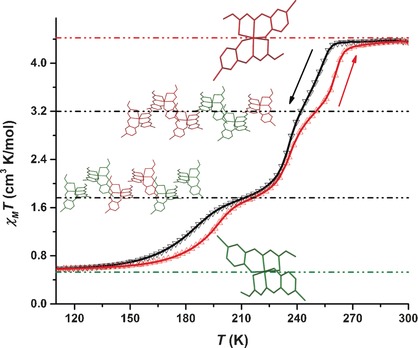
In quite a state: A neutral mononuclear FeIII complex [FeIII(H-5-Br-thsa-Me)(5-Br-thsa-Me)]⋅H2O (thsa=5-bromosalicylaldehyde methylthiosemicarbazone) exhibited a three-step spin crossover with symmetry breaking and a 14 K hysteresis loop owing to strong cooperativity (see picture). The intermediate spin states showed remarkable long-range 4 HS–2 LS and 2 HS–4 LS spin-state ordering (HS=high-spin, red; LS=low-spin, green).
Bioinorganic Chemistry
Conversion of Nitric Oxide into Nitrous Oxide as Triggered by the Polarization of Coordinated NO by Hydrogen Bonding
- Pages: 5190-5194
- First Published: 22 March 2016

Alcohol can H⋅⋅⋅elp: Water, methanol, or ethanol triggered the formation of a [N2O2]-bridged intermediate from a reduced cobalt–nitrosyl N-confused porphyrin to enable the conversion of NO into N2O (see scheme). Hydrogen-bonding interactions assisted N−N coupling and N−O bond cleavage in the intermediate to generate N2O.
Coordination Polymers
Glass Formation of a Coordination Polymer Crystal for Enhanced Proton Conductivity and Material Flexibility
- Pages: 5195-5200
- First Published: 16 March 2016
Li-O2 Batteries | Hot Paper
Identifying Reactive Sites and Transport Limitations of Oxygen Reactions in Aprotic Lithium-O2 Batteries at the Stage of Sudden Death
- Pages: 5201-5205
- First Published: 11 March 2016
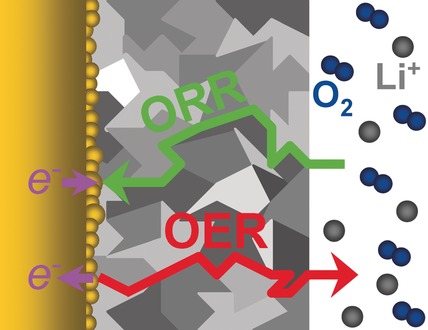
Direct conductivity measurement of an electrodeposited Li2O2 film and an in situ SERS study on the O2 reduction reaction (ORR) using 18O2 for passivation and 16O2 for further discharging unveiled the origin of sudden death of aprotic Li-O2 batteries. Both ORR and O2 evolution (OER) occur at the buried interface of cathode|Li2O2, and thus the Li-O2 electrochemistry is limited by electron transport instead of Li+ and O2 transport.
Organic Semiconductors
The Impact of Interlayer Electronic Coupling on Charge Transport in Organic Semiconductors: A Case Study on Titanylphthalocyanine Single Crystals
- Pages: 5206-5209
- First Published: 17 March 2016
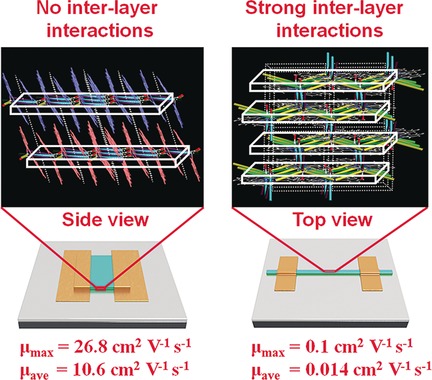
Molecular packing motifs play a key role in determining the charge-transport properties of molecular materials. Interlayer electronic couplings perpendicular to the current direction result in a drastic decrease of charge mobilities, shown by utilizing field-effect transistors. α-Phase TiOPc crystals (see picture; left) show a maximum mobility μmax more than 250 times that of the β-phase.
Reaction Mechanisms
Analyzing the Case for Bifunctional Catalysis
- Pages: 5210-5214
- First Published: 23 March 2016
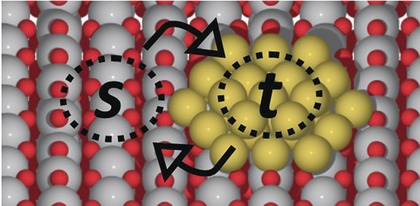
The gains in catalytic activity that are achievable through bifunctional coupling by diffusion (between two sites s and t; see picture) are assessed using generic reaction schemes and a descriptor-based approach. The analysis predicts that only the coupling of different classes of materials, such as metals and oxides, can give rise to substantial gains.
Heterogeneous Catalysis
Molybdenum Speciation and its Impact on Catalytic Activity during Methane Dehydroaromatization in Zeolite ZSM-5 as Revealed by Operando X-Ray Methods
- Pages: 5215-5219
- First Published: 17 March 2016
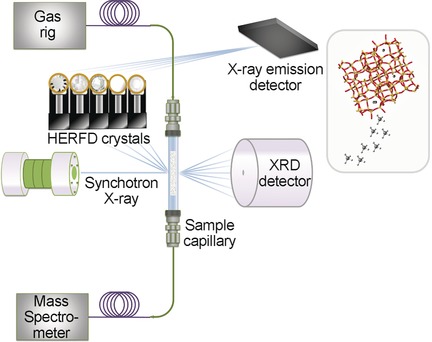
“Watch” and learn: Combined high-resolution fluorescence detection X-ray absorption near-edge spectroscopy (HERFD-XANES), X-ray diffraction (XRD), and X-ray emission spectroscopy under real operando conditions provided detailed insight into the nature of the Mo species on zeolite ZSM-5 during methane dehydroaromatization, demonstrating the importance in controlling Mo speciation to influence selectivity towards light olefins and/or aromatic species.
Duplexed Imaging
A Single Excitation-Duplexed Imaging Strategy for Profiling Cell Surface Protein-Specific Glycoforms
- Pages: 5220-5224
- First Published: 22 March 2016
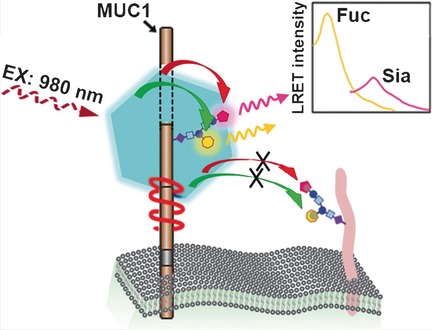
Using upconversion luminescent nanoparticles (UNPs) as a polychromatic emission donor, a single-excited duplexed luminescence resonance energy transfer (D-LRET) system was developed on a cell surface for in situ duplexed imaging and relative quantification of two kinds of sugars on a specific protein using mucin 1 (MUC1) as the model. The strategy also enables monitoring of the expression of the fucosylated and sialylated terminal on MUC1.
Biomineralization | Very Important Paper
A Drug-Free Tumor Therapy Strategy: Cancer-Cell-Targeting Calcification
- Pages: 5225-5229
- First Published: 17 March 2016
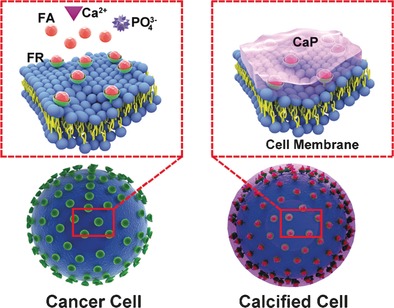
Anticancer mineralization: Cancer-cell-targeting calcification can convert tumors into calcified tissues by using folic acid (FA), calcium, and the folate receptor (FR) resulting in cancer cell growth and metastatic inhibition without any drugs. These results suggest cancer cells can be selectively targeted using biomineralization methods.
Singlet Fission
High-Yield Excited Triplet States in Pentacene Self-Assembled Monolayers on Gold Nanoparticles through Singlet Exciton Fission
- Pages: 5230-5234
- First Published: 21 March 2016
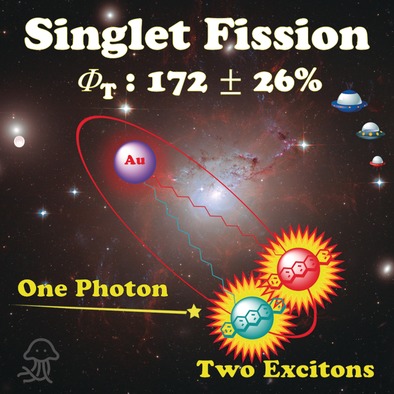
Split the difference: A series of 6,13-bis(triisopropylsilylethynyl)pentacene–alkanethiolate monolayer protected gold nanoparticles with different particle sizes and alkane chain lengths were synthesized. These systems were employed for the efficient generation of excited triplet states on the pentacene molecules by using singlet exciton fission to suppress energy transfer to the Au surface.
Transition-State Theory | Very Important Paper
Ab Initio Calculation of Rate Constants for Molecule–Surface Reactions with Chemical Accuracy
- Pages: 5235-5237
- First Published: 23 March 2016
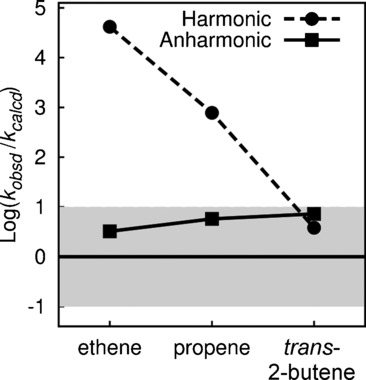
A new strategy enables accurate quantum-mechanical ab initio predictions for the methylation of small alkenes over zeolite catalysts. The calculated reaction rate constants (free energies), pre-exponential factors (entropies), and enthalpy barriers show that this computational strategy yields results that agree with experiment within chemical accuracy limits.
Donor–Acceptor Systems
Construction of an Artificial Ferrimagnetic Lattice by Lithium Ion Insertion into a Neutral Donor/Acceptor Metal–Organic Framework
- Pages: 5238-5242
- First Published: 16 March 2016
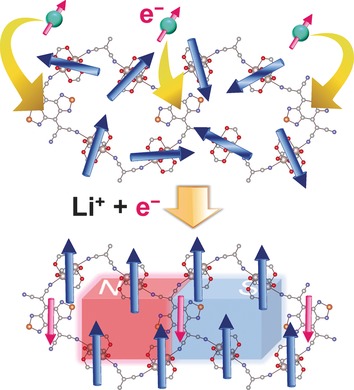
A ferrimagnetic order lattice has been artificially constructed by electron doping by lithium ion insertion from a magnetically disordered ground state in a neutral donor/acceptor metal–organic framework (D/A-MOF). The stability of the magnetically ordered lattice depends on the equilibrium potential of the D/A-MOF cathode. The results suggest a new strategy and direction for the design of molecule-based magnets.
Energy Conversion | Very Important Paper
A Solar Cell That Is Triggered by Sun and Rain
- Pages: 5243-5246
- First Published: 21 March 2016
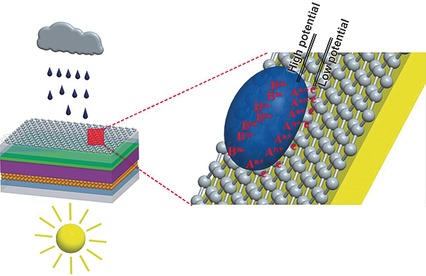
A flexible solar cell that can be excited by sunlight and raindrops is presented. The solar-to-electric conversion efficiency is created by complicated photoelectrochemical reactions, while electric signals, produced by dropping raindrops on rGO film, arise from π-electron|cation pseudocapacitance at the rGO/raindrop interface. This work could guide the design of all-weather solar cells.
Electrocatalysis
Electrocatalytic Hydrogen Production by a Nickel(II) Complex with a Phosphinopyridyl Ligand
- Pages: 5247-5250
- First Published: 16 March 2016
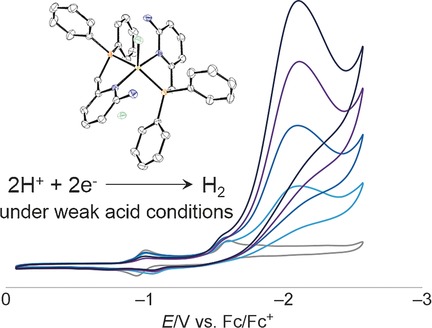
A nickel(II) complex [Ni(L)2Cl]Cl (L= 6-((diphenylphosphino)methyl)pyridin-2-amine), having an amine base as a proton-transfer site, was synthesized and used as a hydrogen-production catalyst. Electrochemical measurements with the complex show that a higher rate of H2 production (turnover frequency=8400 s−1) can be achieved under weak acid conditions using acetic acid as a proton source.
Block Copolymers
Block Copolymerization of Lactide and an Epoxide Facilitated by a Redox Switchable Iron-Based Catalyst
- Pages: 5251-5254
- First Published: 17 March 2016
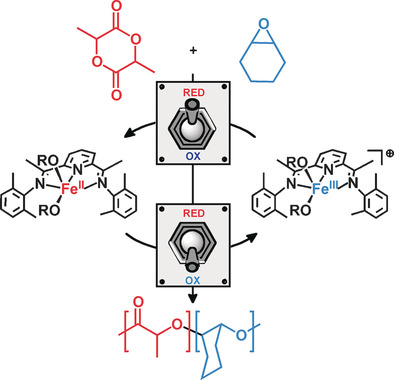
The redox-controlled block copolymerization of cyclohexene oxide and lactide capitalizes on the ability for a bis(imino)pyridine iron bisalkoxide complex to polymerize lactide in the iron(II) oxidation state and epoxide in the iron(III) state, but not vice versa. Diblock copolymers were synthesized with both monomers present starting with either the iron(II) or iron(III) catalyst and using an in situ redox switch.
Nucleotide Prodrugs
Membrane-permeable Triphosphate Prodrugs of Nucleoside Analogues
- Pages: 5255-5258
- First Published: 23 March 2016
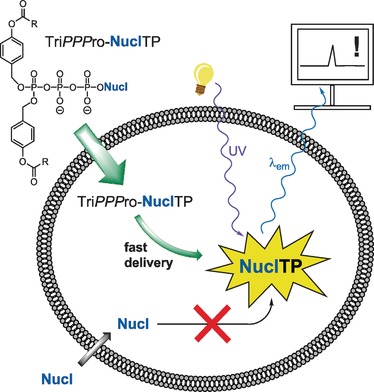
NTP drugs go pro: The TriPPPro-approach was used to synthesize a series of nucleoside triphosphate analogues. The TriPPPro-compounds displayed anti-HIV activity and cellular uptake. In some cases, even inactive parent nucleosides were converted into powerful antiviral compounds. These results could thus aid the development of future nucleoside prodrugs.
Arsenolipids | Very Important Paper
Arsenic-Containing Phosphatidylcholines: A New Group of Arsenolipids Discovered in Herring Caviar
- Pages: 5259-5262
- First Published: 21 March 2016

A complex delicacy: Arsenic-containing phosphatidylcholines and an arsenic-containing phosphatidylethanolamine have been identified in fish roe. The incorporation of the arsenic group into typical membrane lipids might impart particular properties to the molecules not displayed by their non-arsenic analogues.
Stereoselective Hydrogenation
Single-Face/All-cis Arene Hydrogenation by a Supported Single-Site d0 Organozirconium Catalyst
- Pages: 5263-5267
- First Published: 17 March 2016
Homogeneous Catalysis
Iron-Carbonyl-Catalyzed Redox-Neutral [4+2] Annulation of N−H Imines and Internal Alkynes by C−H Bond Activation
- Pages: 5268-5271
- First Published: 22 March 2016
![Iron-Carbonyl-Catalyzed Redox-Neutral [4+2] Annulation of N−H Imines and Internal Alkynes by C−H Bond Activation](/cms/asset/aa68b45d-9466-4bcb-9aca-86908faa7ef3/anie201600365-toc-0001-m.jpg)
Double dose of iron: The titled redox-neutral [4+2] annulations to furnish cis-3,4-dihydroisoquinolines were achieved by using iron catalysis. Mechanistic studies show the synergy of dinuclear iron in the C−H bond activation and turnover-limiting hydrogen-transfer steps. The reaction demonstrates excellent atom economy and exclusive cis stereoselectivity.
Cross-Coupling
Heterogeneous Rhodium-Catalyzed Aerobic Oxidative Dehydrogenative Cross-Coupling: Nonsymmetrical Biaryl Amines
- Pages: 5272-5276
- First Published: 21 March 2016

A jab-cross move: A heterogeneously catalyzed oxidative dehydrogenative cross-coupling of aryl amines is reported. Aryl amines were treated with various arenes using a heterogeneous Rh/C catalyst under mild aerobic conditions to selectively afford cross-coupled products, and provides an efficient synthetic method for the preparation of nonsymmetrical biaryl amines by oxidative C−H activation.
Oxygen Vacancies
Plasma-Engraved Co3O4 Nanosheets with Oxygen Vacancies and High Surface Area for the Oxygen Evolution Reaction
- Pages: 5277-5281
- First Published: 17 March 2016
Synthetic Methods
Chiral Phosphoric Acid Catalyzed Asymmetric Ugi Reaction by Dynamic Kinetic Resolution of the Primary Multicomponent Adduct
- Pages: 5282-5285
- First Published: 21 March 2016

Ugi for real: Reaction of isonitriles (A) with 3-(arylamino)isobenzofuran-1(3H)-ones (B) in the presence of a catalytic amount of chiral phosphoric acid (CPA) afforded 3-oxo-2-arylisoindoline-1-carboxamides (C) in high yields with good to high enantioselectivities. An enantioselective Ugi multicomponent reaction of D, E, and A was subsequently developed for the synthesis of the same heterocycle C.
Asymmetric Catalysis
Copper/Guanidine-Catalyzed Asymmetric Alkynylation of Isatins
- Pages: 5286-5289
- First Published: 17 March 2016

Active duty: Asymmetric alkynylation of isatins was achieved by a new bifunctional chiral guanidine ligand in combination with CuI under mild reaction conditions. Good levels of reactivity and excellent enantioselectivities were achieved with diverse alkyl- and aryl-substituted terminal alkynes and various substituted isatins, thus generating bioactive 3-alkynyl-3-hydroxyindolin-2-ones.
Cyclotrimerization | Very Important Paper
[1+1+1] Cyclotrimerization for the Synthesis of Cyclopropanes
- Pages: 5290-5293
- First Published: 21 March 2016
![[1+1+1] Cyclotrimerization for the Synthesis of Cyclopropanes](/cms/asset/503f3428-2f11-4a4c-82b7-ca1c8959f1ef/anie201600807-toc-0001-m.jpg)
Give it a tri: Copper-catalyzed oxidative [1+1+1] cyclotrimerization of acetophenone derivatives under mild reaction conditions and with a broad reaction scope has been developed. This transformation is a radical cascade process that allows saturated carbocycles to be obtained by cyclotrimerization through functionalization of C(sp3)−H bonds.
Asymmetric Catalysis
Stereoarrayed CF3-Substituted 1,3-Diols by Dynamic Kinetic Resolution: Ruthenium(II)-Catalyzed Asymmetric Transfer Hydrogenation
- Pages: 5294-5298
- First Published: 22 March 2016

Doubling up: A double dynamic kinetic resolution is described for the ansa-ruthenium(II)-catalyzed asymmetric transfer hydrogenation of diketones in formic acid/triethylamine to yield the title compounds, displaying a stereotriad, in excellent stereopurity. The intermediate mono-reduced alcohols were isolated in very high enantiopurity by using milder reaction conditions.
Synthetic Methods
A Hydrazone-Based exo-Directing-Group Strategy for β C−H Oxidation of Aliphatic Amines
- Pages: 5299-5303
- First Published: 22 March 2016
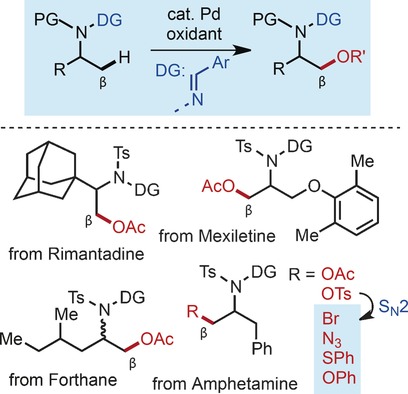
All about the DGs: A hydrazone-based exo-directing group (DG) strategy is developed for the functionalization of unactivated primary β C−H bonds of aliphatic amines. The hydrazone DGs can be conveniently installed and removed, and promote β-acetoxylation and tosyloxylation via a five-membered exo-palladacycle. PG=protecting group, Ts=4-toluenesulfonyl.
Host–Guest Chemistry
Triptycene-Based Chiral Macrocyclic Hosts for Highly Enantioselective Recognition of Chiral Guests Containing a Trimethylamino Group
- Pages: 5304-5308
- First Published: 24 March 2016
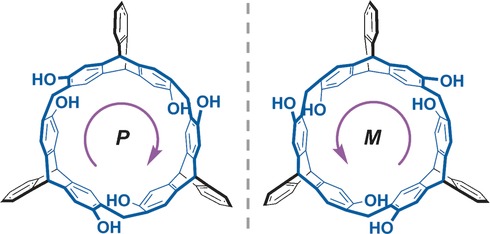
Go nuts! A novel triptycene-based chiral macrocyclic host with a hex-nut-like structure and highly fixed conformation was synthesized. Efficient resolution was achieved through the introduction of chiral auxiliaries to give a couple of enantiopure macrocycles, which exhibited highly enantioselective recognition of three pairs of chiral compounds containing a trimethylamino group.
Asymmetric Catalysis
Direct Asymmetric Reductive Amination for the Synthesis of Chiral β-Arylamines
- Pages: 5309-5312
- First Published: 16 March 2016

Asymmetric reductive coupling of a ketone and an amine is a straightforward and atom-economic approach for preparing optically enriched amines. The highly efficient and direct asymmetric reductive amination of arylacetones, catalyzed by an iridium complex, supplies enantiomerically pure β-arylamines. The new phosphoramidite ligands reported show superb reactivity and enantioselectivity in this reductive coupling. M.S.=molecular sieves, TFA=trifluoroacetic acid.
Electron Acceptor | Hot Paper
Polymer Acceptor Based on B←N Units with Enhanced Electron Mobility for Efficient All-Polymer Solar Cells
- Pages: 5313-5317
- First Published: 17 March 2016
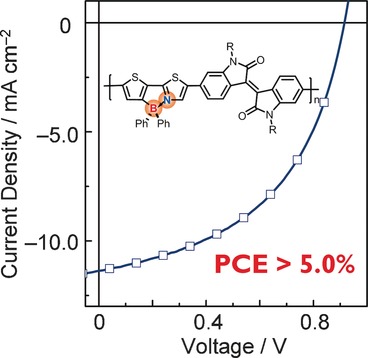
From giver to taker: Incorporation of B←N units into polymer electron donors has resulted in a series of polymer electron acceptors. Extending the length of the repeating units of the conjugated polymers alleviates the effect of steric hindrance from the pendant groups and promotes the π–π stacking of the polymer backbones. The all-polymer solar-cell device shows a power conversion efficiency (PCE) exceeding 5.0 %.
Pseudocapacitors
A Redox-Active Binder for Electrochemical Capacitor Electrodes
- Pages: 5318-5321
- First Published: 21 March 2016

The Binder Age: The organic binder in hybrid materials was used as a platform for grafting to preserve the high double-layer capacitance and the low ionic resistance of porous carbons. This binder allowed minimizing the loading of inactive material in the electrode, while improving its capacitance and reducing its ionic resistance, mainly owing to a better wettability of the porous carbon.
Coordination Modes
σ–π Continuum in Indole–Palladium(II) Complexes
- Pages: 5322-5326
- First Published: 23 March 2016
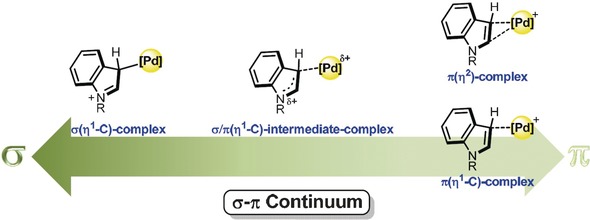
Continuum split: The isolation and systematic structural analysis of non-anchored indole–palladium(II) complexes revealed that there is a σ–π continuum for heteroarene–metal complexes. These findings may provide insights into key catalytic intermediates of metal-catalyzed heteroarene transformations.
Microreactors
Generation and Reaction of Carbamoyl Anions in Flow: Applications in the Three-Component Synthesis of Functionalized α-Ketoamides
- Pages: 5327-5331
- First Published: 15 March 2016
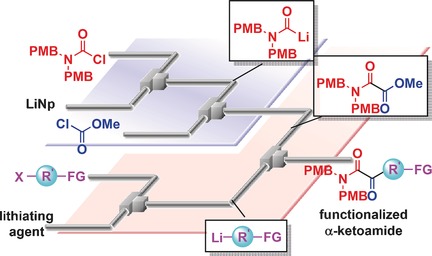
Go with the flow: Using a flow microreactor system, carbamoyllithium compounds were successfully generated and used to react with electrophiles to give various amides, including α-ketoamides. The method was applied to the three-component synthesis of functionalized α-ketoamides using a carbamoyllithium compound, methyl chloroformate, and a functionalized organolithium reagent. PMB=p-methoxybenzyl; FG=functional group.
Conjunctive Reagents
Polyfunctional Lithium, Magnesium, and Zinc Alkenyl Reagents as Building Blocks for the Synthesis of Complex Heterocycles
- Pages: 5332-5336
- First Published: 16 March 2016
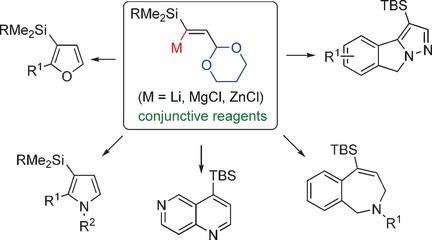
Versatile conjunctive reagents: New conjunctive β-silylated organometallic reagents of Li, Mg, and Zn have been prepared and used for an expeditive construction of various polyfunctionalized 5-, 6-, and 7-membered heterocycles, such as furans, pyrroles, quinolines, benzo[b]thieno-[2,3-b]pyridine, naphthyridines, fused pyrazoles, and 2,3-dihydrobenzo[c]azepines.
Genetic Code | Hot Paper
Facile Recoding of Selenocysteine in Nature
- Pages: 5337-5341
- First Published: 16 March 2016
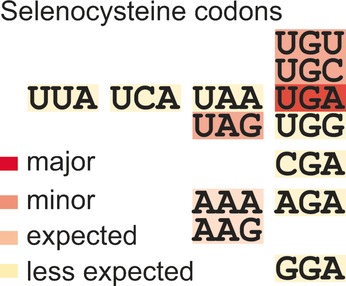
Stop making sense: Selenocysteine is encoded by UGA, a stop codon reassigned by a Sec-specific elongation factor and a distinctive RNA structure. Analysis of 6.4 trillion base pairs of metagenomic sequences and about 25 000 genomes revealed tRNASec species that recognize the stop codons UAG and UAA, and ten sense codons. Thus the genetic code is much more flexible than previously thought.
Oxidative Chlorination
Halogenase-Inspired Oxidative Chlorination Using Flavin Photocatalysis
- Pages: 5342-5345
- First Published: 17 March 2016




